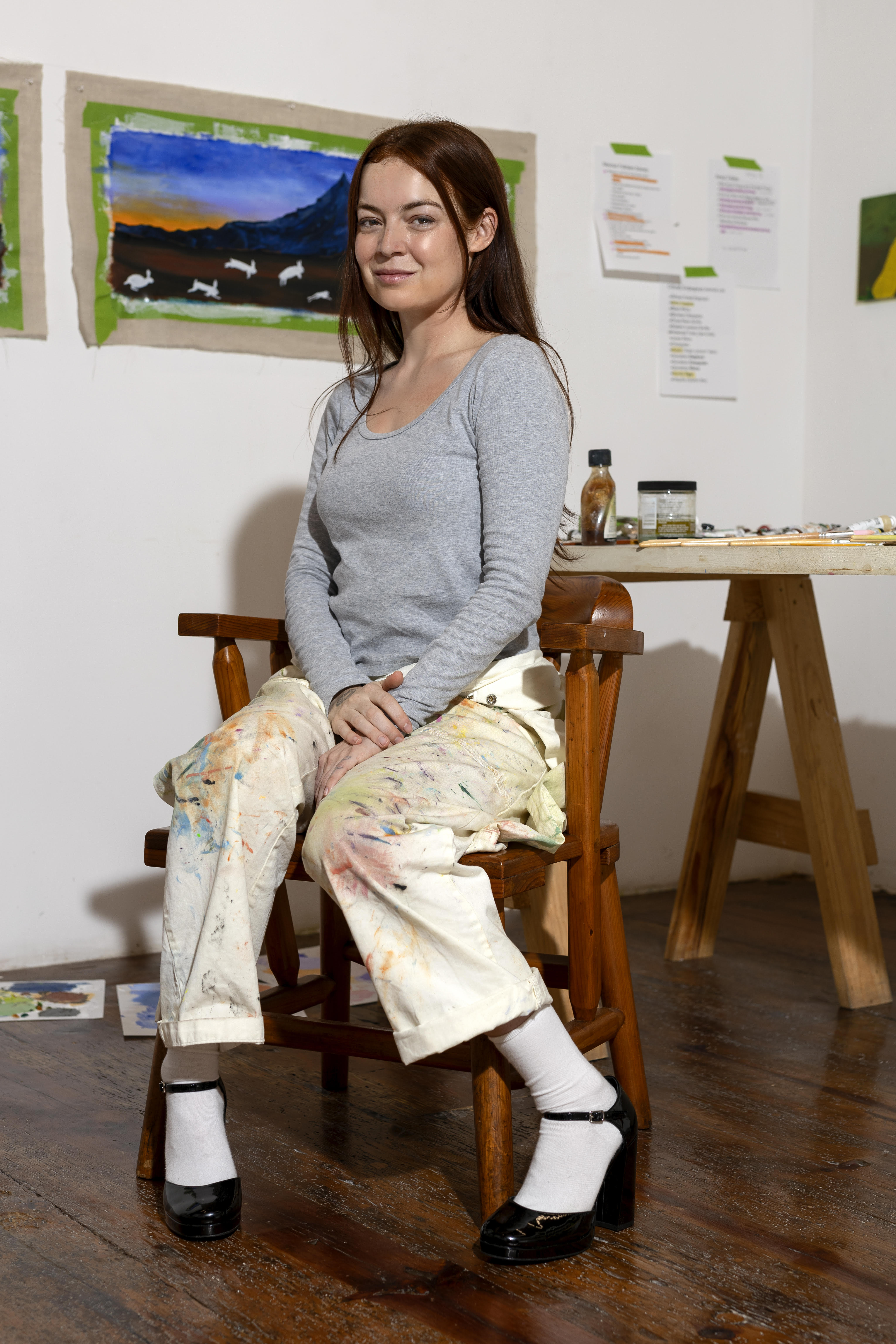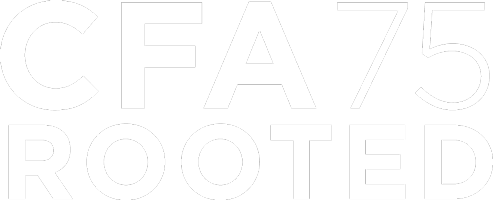By Sarah Benedict  Adrienne Roma Sacks is an interdisciplinary artist originally from Phoenix, Arizona who has an expansive portfolio and unique style. Most recently, Adrienne has exhibited her work in Mexico City in “That Which Hangs on Safety Pins and Needles,” a show with paintings making use of expressive and winding lines, carefully considered animal silhouettes, and desolate landscapes. I had the opportunity to speak with Adrienne to discuss how she found success in the arts, the way she approaches creation, and what advice she has for art students today.
Adrienne Roma Sacks is an interdisciplinary artist originally from Phoenix, Arizona who has an expansive portfolio and unique style. Most recently, Adrienne has exhibited her work in Mexico City in “That Which Hangs on Safety Pins and Needles,” a show with paintings making use of expressive and winding lines, carefully considered animal silhouettes, and desolate landscapes. I had the opportunity to speak with Adrienne to discuss how she found success in the arts, the way she approaches creation, and what advice she has for art students today.
During the interview, I first asked Adrienne about the artists that inspire her work. She immediately mentioned Mike Kelley, who is known for using craft materials, found objects, collage techniques, and drawing, which are all prevalent in Adrienne’s work. Adrienne often treats her projects like experiments, working in iterations and plunging into several areas of the arts. She felt that Kelley’s work, amongst several other inspirations like painter Amy Sillman and painter/sculptor Alake Shilling, gave her the push to be more daring with the mediums she used. She mentioned, “It's nice to see someone do something and you feel like you have permission to approach your art in that way.” Art is not reserved to just one medium or approach, and Adrienne’s work is a tribute to this.
One philosophy that drives Adrienne’s practice is the rejection of perfectionism. She explains that it’s truly the enemy of the artist, and encourages other artists to push against it. She points out that perfectionism is, “not conducive to making good art or sometimes even making art at all.” She also encourages artists to always be writing ideas down, sketching, and not worrying about showing off everything you make with others. Make use of the resources you already have, even if it just becomes a small step in the process of carrying out your entire vision. Adrienne put it simply: “do what you can with where you are and what you have.” Always be creating and accepting imperfections.
Adrienne realizes and also embraces that many artists in similar positions to her must also take on multiple jobs, whether that be in the applied arts or elsewhere. Adrienne discussed with me how difficult it is to find the energy to continue working on art while also teaching it. Throughout her career, she has taught from preschool and up, working at California State Summer School for the Arts at CalArts, California State University Northridge, and Pratt Munson. She mentions that teaching is the sort of career that you put your entire self into, similar to art. It can be physically and emotionally draining to balance the two. At the same time, she finds that it is undeniably rewarding. For her, teaching is similar to making art because she gets to design experiences that encourage learning. She also thinks it is valuable for people to be interested in multiple career pathways. It’s necessary to do what you can to support yourself as an artist and a human being.
While balancing multiple jobs since graduation, Adrienne has exhibited her work internationally. I asked Adrienne how someone could go about beginning to exhibit their own artwork. In college, she explained that she started by making her own opportunities and asking to display her work in various public spaces. She said that as you accumulate experience, you improve, and people will notice. She also thought that social media platforms like Instagram, which was not as much of a prevalent resource for her when she was in college, is immensely beneficial now because it can connect you to art communities you would’ve never connected with naturally. After years of exhibiting her work, she finds that her effort to put her art out there has paid off, and now various people will approach her about exhibiting her work.
"Do what you can with where you are and what you have.”
Despite that, even now Adrienne continues to apply for exhibitions everywhere she can, constantly. She emphasized that noes never mean that you are not a good artist. You have to get used to incessant rejection, but she has found that if you apply enough, you will get a lot of yeses too.
Adrienne feels lucky that her artistic career has taken off, but one of her interests in college was clinical psychology, which she has a bachelor's degree in. The decision to lean into the professional world of art is a daunting process which can often be looked down upon by others in your community. I asked her how she has dealt with people being critical of her decision to switch away from psychology. After having lived in Los Angeles and New York, she has observed that being an artist is far more accepted in places that are considered international art centers. Finding her place in the right environment, where working in the arts is normalized, was helpful. Growing up in Phoenix, she noticed that there is not an abundance of successful contemporary artists, and those that were concerned for her struggled to picture success in the arts. She surmised that being an artist in Salt Lake City probably has a similar effect. She clarifies, “I don’t blame anyone for their misconceptions, but I do think they’re misconceptions.” Finding where your art fits into the world is a necessary step to take in finding success.
 From "That Which Hangs on Safety Pins & Needles" | Adrienne Roma Sacks
From "That Which Hangs on Safety Pins & Needles" | Adrienne Roma Sacks
On the topic of acceptance, Adrienne expanded on the importance of searching for an intellectual interest to influence your art. She observed that, “what people are hungry for right now is art that can help teach the public something”. Showing information and illuminating prevalent issues through your art is more important than having perfect technical skills, and there really is an endless list of topics that artists can and should dive into. Making art that is impactful should always be top priority.
We ended the interview discussing what life advice she has for art students now. Though it’s difficult to branch out, she believes it is important to never just prioritize your art practice. Describing herself as an intellectually curious person, she’s found that this aspect of herself has kept her afloat. She thinks, “whether it’s having a part time job, a full-time job, two jobs, you have to do it.” It is tough to make your work known and to plunge into the dark abyss that is life after college, but that is why you must become a multifaceted person. It will ultimately advance your own art and provoke more complex conversations within each piece you create.
You can look at Adrienne’s work here.
ArtsForce Takeaways:
-
Perfectionism is the enemy of the artist. Challenge yourself to be constantly creating with whatever resources you already have on hand.
-
Don’t wait around for opportunities to appear, make your own instead.
-
As an art student, it is crucial to search for intellectual interests that enhance the complexity of your art. Avoid focusing solely on your technical skills.
Author Sarah Benedict is studying Film & Media Arts with an emphasis in Animation, and minoring in Drawing and Arts Technology. She is an Emerging Leaders Intern with ArtsForce.


